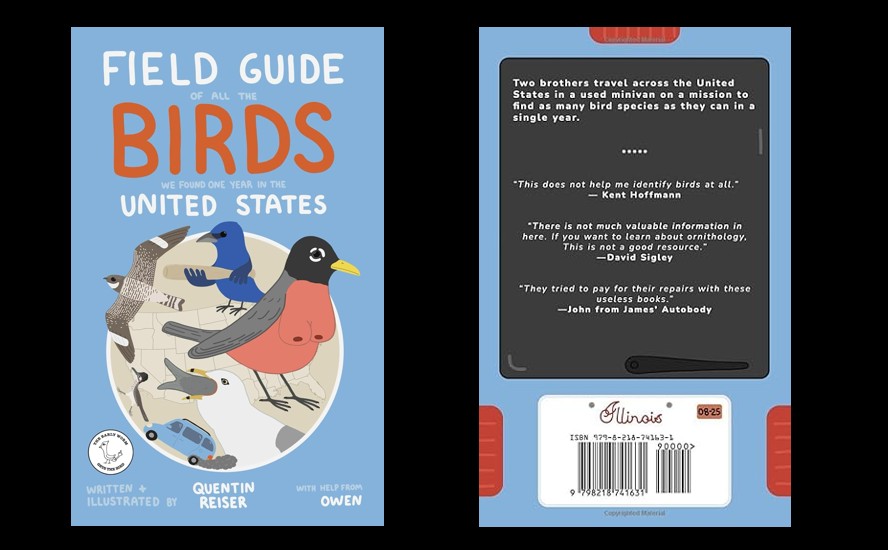
Field Guide of all the Birds we found one year in the United States, written, illustrated, and self-published* by Quentin Reiser with help from Owen. A few weeks ago I published a 10,000 Birds post titled To List or Not to List. In that post, I referenced a new documentary film titled Listers, currently being viewed (I hope still) commercial-free on YouTube. In my post, I remarked that the film was clever, funny, mildly profane, and not your typical narrative-style documentary.
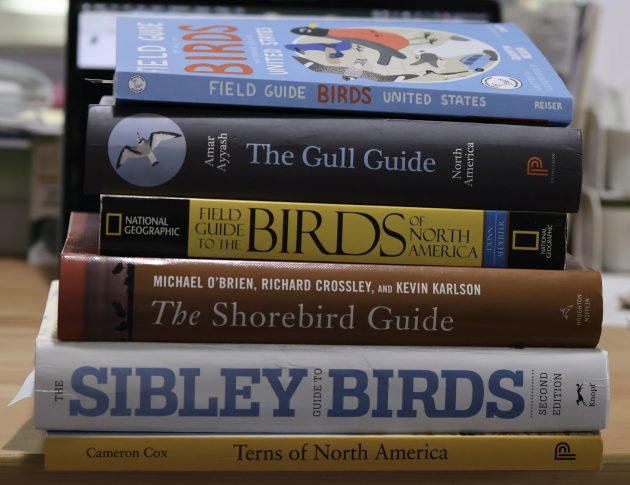
Then, a week or so ago, I was again listening to the American Birding Podcast hosted by Nate Swick and where I had originally learned of the film. The ABA podcast is my go-to when I want to get away from American politics. In episode 09-38, dated Sept. 18, 2025, titled A Dirtbag Big Year with Owen Reiser, Nate interviews the filmmaker Owen. I recommend this interview. Still mildly profane, but what I think will surprise listeners is Owen Reiser’s complimentary views on what he and his brother, Quentin, experienced with the birding community during their dirtbag big year. At the close of the episode, Nate mentions the accompanying field guide. Nate describes the guide as in the style of the old Chandler Robbins field guide. Long ago I met Chandler Robbins. I think Chandler Robbins might roll over in his grave if he heard this, but I’m just repeating Nate’s words here.
Photo of back cover: I noticed that John from James’ Autobody was not very impressed with the book.
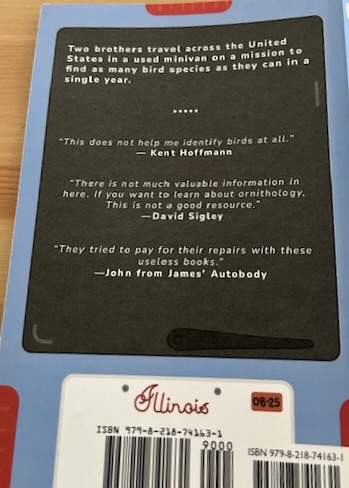
From the documentary film we learn, amongst other things, that the brothers can also fix cars.
This book is hilarious. It is also astonishingly clever and, dare I say it, well-illustrated. It has all of the features of what we expect to find in a field guide—fitted to the brothers’ particular big year. It breaks down how they planned (googled “which States have the most birds” and used Google’s response as their travel guide, p. 6) and proceeded with their big year. The bird write-ups and illustrations are organized in the order in which the birds were seen, and in the area of the country where they were seen.
Quentin and Owen start in their home area, around St. Louis, Missouri (on the state line with Illinois), and from there travel to Florida where they spend twenty days. Quentin writes: “Later in the year, when we were much better birders, we realized we probably could’ve spent five days in Florida instead of twenty, (they hated Florida), and seen just as many birds” (p. 35). So true, and as we all remember, you learn as you go.
I ordered my book and after it arrived it sat, unopened, on my bedside table for a few days. A couple of nights ago, when I couldn’t sleep, I turned on the light and began reading. No, reading is not exactly the right word, although I did read. Really, I began laughing. Hard, good, belly laughs at 1:30 in the morning**. As just one example of the many to choose from: In Florida, they see their first Boat-tailed Grackle (p. 36). Quentin compares it with the Great-tailed Grackle (p.80), which they later see in Texas, with the comment “are less likely to be found at a gas station.” Still in Florida, and after seeing the Boat-tailed Grackle, they see the Common Grackle (p.36). His write-up is this: “Base model. If you want the fancy tail, it’s gonna cost a little extra.”
While most of the text is funny, occasionally it is also semi-serious (Montezuma Quail, p. 110), and sad (Killdeer, p. 22). Birders will relate to both experiences. To the Killdeer, Owen adds, “This is right up there with 9/11.” Birders would agree.
As you may already have guessed, this is no David Allen Sibley or Nat Geo, but I found the illustrations to be completely charming and startlingly accurate. Some serious artistic talent and time went into drawing and coloring all of the images which, funny as they are, cannot be dismissed.
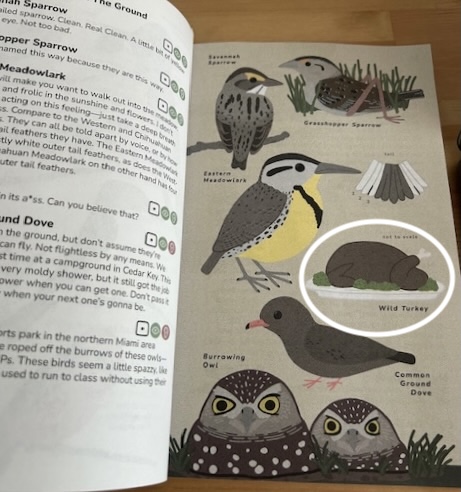
The illustration of the Wild Turkey*** is circled.
This book can be read in a few hours by most readers. I’m reading slowly to enjoy it and am about halfway**** through. I pick it up when I can’t sleep and/or want to laugh. The thing that I think brings the spoof full circle is this: truthfully, Quentin Reiser’s guide is especially for birders. Birders will recognize the truth, accuracy, and humor of what he writes and illustrates. Non-birders are unlikely to get it.
From the podcast interview, I believe the brothers may still be doing a bit of birding here and there. They are receiving a nice amount of attention for their big year endeavor, for the documentary film (Owen is the filmmaker), and now for Quentin’s field guide. Clearly, both Quentin and Owen are talented individuals. Hopefully, they will continue to bird and give us more humorous insights. With the success of this project, I suspect they will also embark on other projects. It does not seem that either brother is planning to settle down, get married and start a family anytime soon.
I’ll close with this anecdote. At 1:30 in the morning, I wanted to use my phone to open the QR code to see the Red-shouldered Hawks’ “magical cloacal kiss” (p. 20). Suddenly, I realized that my phone was not in any of the places where it should have been. I finally went out to my back porch to find my phone, turned on and the battery in the red zone. I credit this field guide and Quentin’s use of QR codes for helping me avoid phone disaster. The QR code opens to a YouTube video of a cheering crowd, no doubt being egged on by Owen, watching Red-shouldered Hawks mate. QR codes are scattered throughout the book. Extra little surprises.
* I try to avoid free advertising for Amazon anywhere I write. However, it is possible that Quentin used Amazon’s self-publishing service to publish his book. Regardless, the book is attractive and sturdily printed. The price at Barnes and Noble and Amazon is the same at $24.99. I’ve ordered three more copies for gifts.
** Perhaps best not to read at 1:30 am if you have a sleeping partner.
*** I drew the circle around Quentin’s Wild Turkey illustration. As 10,000 Birds is an international site, some readers may not know that stuffed turkey is the main course for the late November American Thanksgiving holiday dinner. Sometimes, thanks to those inclined to hunt, dinner is a stuffed Wild Turkey.
**** I guess I must be able to tolerate a significant amount of profanity – especially in the style of Quentin Reiser. The book is more profane than I acknowledged earlier.


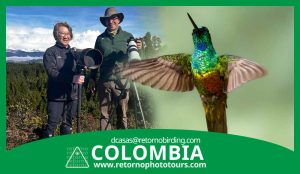


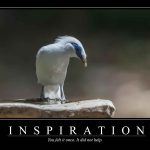
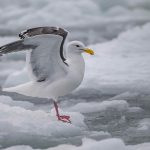
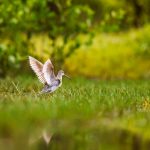
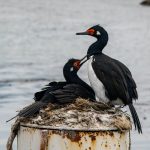
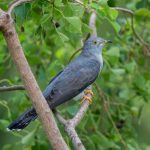
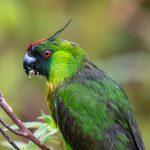
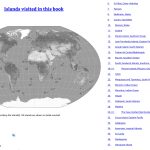
Thanks for the explanation about the turkey, Catherine. Does sound like a fun book, but not one that’s likely to appear this side of the Atlantic.
David I agree. It’s pretty US centric. That said, I don’t think one needs to be an American birder to read and laugh. Happy to send you a copy!
Saw the movie and had a really good laugh. It’s really good and very recognisable. We all know “people like that”. Birding because of eBird’s ranking? We know that guy (always a guy). Closing remark: Birds are fun as f…!